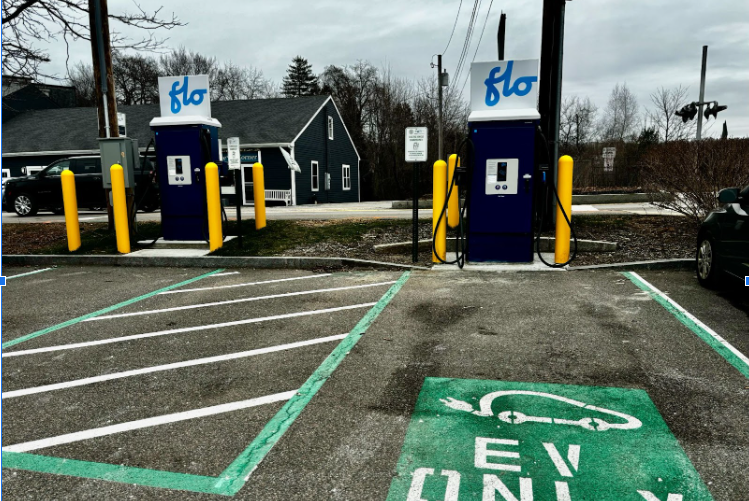Electric Vehicles (EVs), have spiked in popularity over the last decade, largely thanks to Elon Musk’s Tesla, the world’s fastest growing car company, which makes exclusively EVs. EVs now represent about 1.5% of the cars in the United States, which might seem insignificant, but close to 10% of cars in the United States are also hybrids — that is, a mix of electric and gas-powered.
The largest difference between gas powered cars and EVs is the need for charging. EVs have the benefit (or drawback, depending on how it is viewed) of running on electricity, meaning that they can be charged at your home, provided you have electrical charging equipment installed to support it. The issue comes, however, when traveling in an EV, as public chargers are much, much more scarce than traditional gas stations. For example, at this time Hingham has just 8 public chargers. This may seem inconsequential until you consider that unlike a gas station, which may only require a five-minute stop, some chargers, depending on the type, may take six or more hours to fully charge the battery of an EV.
But why is frequent charging so essential? It comes down to the biggest weakness of EVs: range. Even the best EVs are only estimated to have a range of 250-300 miles under ideal conditions. The emphasis is on “ideal conditions,” which definitely do not exist in New England’s frigid winters. In the cold, an EV’s range can decrease by up to 50%. To date, the demand for EVs has been limited by two factors: slow, often inaccessible charging and poor range.
Another issue with EVs is cost. A recent study from Edmunds.com determined that the average EV costs about $13,000 more than the average gas car, largely due to the expense of lithium ion batteries. Because of this, EVs have been more of a “premium” car in years past, though now companies such as Hyundai, Nissan, and Toyota are attempting, rather successfully, to create more affordable EVs that rival the prices of their gas equivalents. Additionally, insurance costs for EVs are also substantially higher than gasoline cars due to special handling requirements and higher part replacement costs.
President Biden is encouraging many states to pass EV requirement laws, which will require a certain percentage of cars sold to be EVs. As of now, Massachusetts is requiring 100% of cars sold in 2036 to be electric. However, many are hesitant about the feasibility of this goal, mainly due to the lack of charging infrastructure. We do not currently have the electricity generating capacity to support the charging of a larger fleet of EVs.
However, most people who own EVs seem to believe the benefits outweigh the drawbacks. Senior Josh Bradshaw, whose family recently purchased their first EV, thinks the biggest benefit of an EV is “how much money we have saved on gas by simply charging the vehicle at home.” He also elaborates that “the only downside that we have experienced is that it is difficult to take long trips because the battery life is limited especially in the winter months.” Even with this limiting factor, Josh prefers the family’s EV to their gas-powered car.
Troy Leibovici is a sophomore who firmly prefers gas cars to EVs. However, he sees the evolving car market, noting that EVs will “eventually be the future of the automotive industry.”
So how will EVs fit into the automobile market in 5-10 years. It is still to be determined and will depend on a variety of factors including cost, charging infrastructure, and range improvements.































